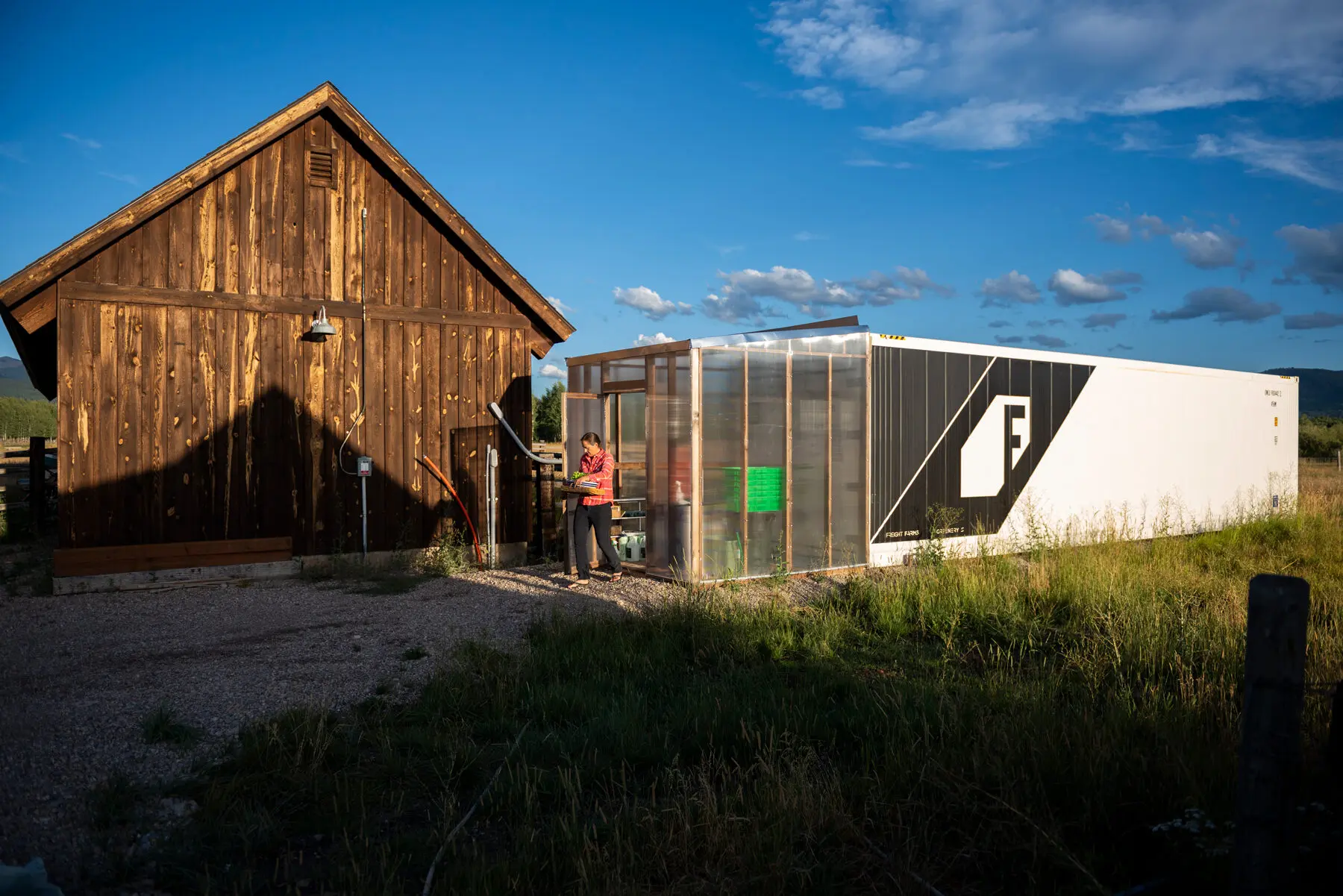By Molly Absolon // Photography by Camrin Dengel
—
Katie Salsbury says her latest endeavor makes her feel like a mad scientist.
In a shipping container next to her house, blue and red lights glow purple. The air smells humid and warm, even in mid-winter. Trays on a counter — the designated nursery area —contain tiny germinating plants. Every hour, water fortified with liquified nutrients, like nitrogen and phosphate, trickles down. Beyond the nursery area, vertical columns of leafy green lettuce, kale, and a mix of herbs — basil, thyme, sage, dill, parsley, and cilantro — grow lined up in rows. A drip runs down the columns once every hour for five minutes to water the plants; any leftover moisture collects in a gutter and gets recirculated into the system. The farm uses only five gallons of water a day.
Salsbury controls these operations with an app on her cellphone. She can look at pictures of her farm from anywhere, at any time. She can check the nutrient content of the water and see how much energy she’s using at any given moment. She can monitor the relative humidity and adjust the percentage of red and blue lights to maximize the plant growth. Her container farm — Cattle Creek Ranch — houses the perfect growing environment every day of the year, whether it’s minus 30 or 95 degrees outside.
Cattle Creek’s climate-controlled 40-by-10-foot container produces 200 pounds of greens per week, which Salsbury sells through her website, as CSA shares, and in her new farm store located 3 miles away in downtown Victor. The seeds come in via mail order and the substrate (or “plugs”) her plants grow in contains an imported mix of peat and coconut husks. But once everything is here in the valley, the operation has a very light impact on its surrounding environment. Salsbury thinks this kind of farming fills an important niche in feeding the planet.
Hydroponic farms are lauded for their efficiency. According to an article posted on earth.com, the average yield of tomatoes from conventional growers in 2016 was 1.85 pounds per square foot. Indoor hydroponic growers reported averages of 10.59 pounds per square foot. Furthermore, hydroponic plants grow faster, while pests and disease are more easily controlled, so there are a lot of reasons the technique is taking off, especially in places where dirt farms are limited by climate and land availability. Teton Valley’s farming challenge is its long, cold winters.
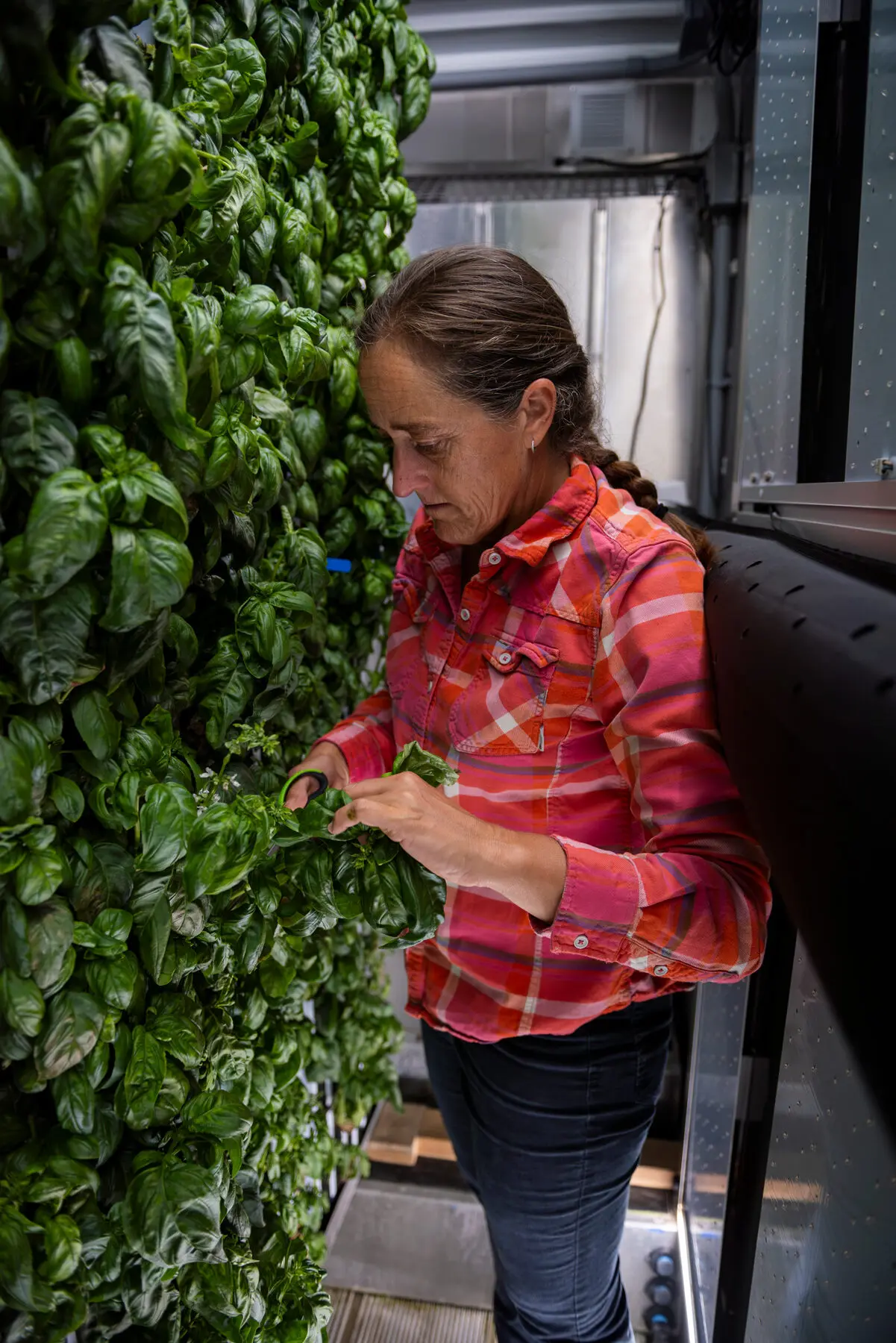
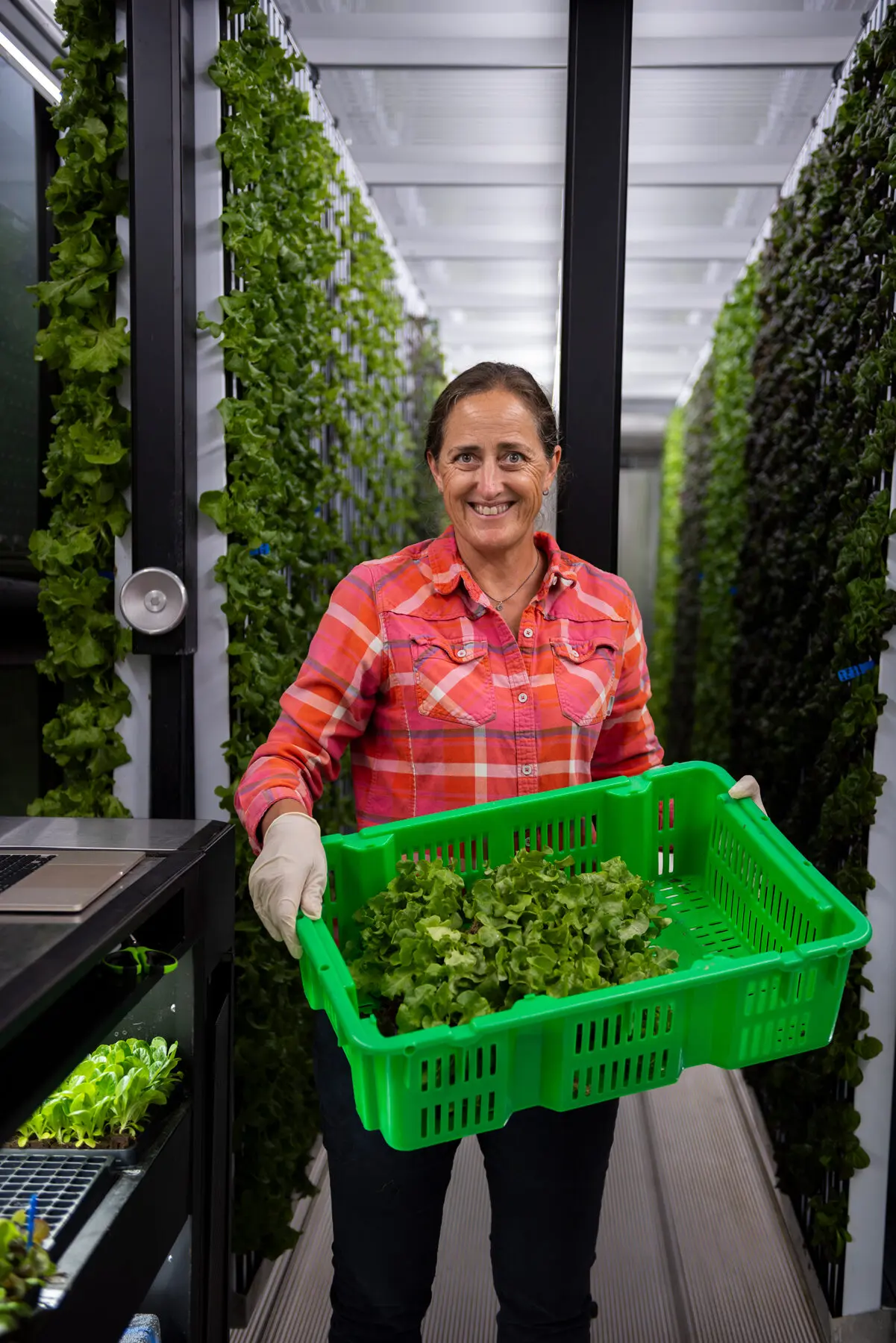
“It’s the way we’ll grow food on Mars,” Salsbury says. “With the changing climate, it’s a way to grow food in inhospitable areas — food deserts, islands, cold or hot climates. It doesn’t replace dirt farms, but it’s hyper local, has a low carbon footprint, and you can grow super yummy lettuce.”
Salsbury’s inspiration to explore the idea of container farming came from Dave Ridill, a former farmer in Tetonia. Ridill ended up selling his business, Clawson Greens, and moving away from the valley to help his family back in Maine, but before he left, he encouraged Salsbury to dive right in. He’d been successful supplying fresh greens to local restaurants in the region and thought she could make a go of it too.
Salsbury lives on 240 acres owned by her family on the edge of Victor — her parents and her sister and family also live on the property. In the past, they tried different ways to use the land to contribute to the community, but finding options that were economical was challenging. Since Salsbury, a natural entrepreneur, had already started two successful businesses, she wasn’t afraid to try something new. Ridill’s experience made her confident she could follow his model and supply food to the community without losing money. So, she purchased a container-farm kit from Freight Farms.
“I already have two jobs. This is my latest side hustle — the other jobs pay the bills,” says Salsbury. “I’ve learned quite a bit about how to run a business over the years. I know how to treat employees and how to make a business profitable. I know I have to do all the dirty work myself first, so I can figure it out before I teach someone else.”
Of course, like any farm, this one has had its challenges. For the first nine months, Salsbury did everything herself, and she says she had lots of failures. One day, she opened the door to the container and discovered that the floor was covered with a foot of water. She’s had crops fail for all sorts of reasons, but with every failure she learned something.
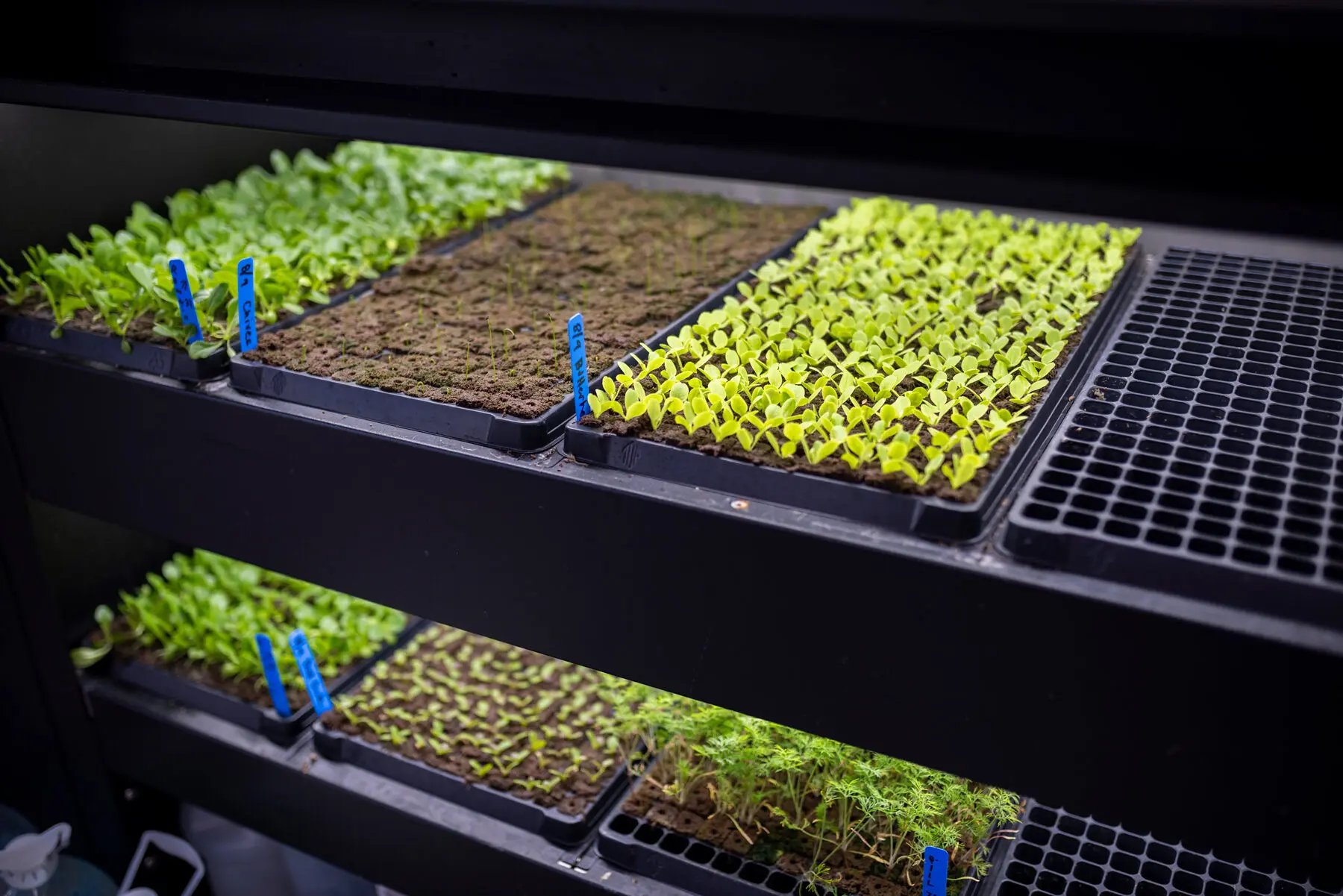
“It’s a fast learning curve,” she says. “If you think about historic farming, you made mistakes over a lifetime and passed them down to the next generation. It took years. Container farming speeds the process up. I’m a year in now, and I’m confident I can get reliable production.”
Cattle Creek Ranch’s greens aren’t making money yet, but they are close, Salsbury says. She’s confident enough that she hired two part-time employees.
Harvest days are on Wednesdays. The lettuce and herbs are cut in the morning, driven to Cattle Creek’s farm store, and sold (or picked up by CSA customers) that afternoon. The shop is open from 3 – 7 p.m., and in addition to the greens, it also sells local eggs and garlic, as well as locally made skincare products and preserves. Salsbury hopes to expand the store’s merchandise as business takes off, but for now she is thrilled to be offering fresh produce for a reasonable price.
“A weekly share, which includes six lettuce heads, a bag of greens, and herbs, costs $25 a week,” she says. “I tried to find a pricepoint that is accessible to most people and still allows me to break even. Any greens we don’t sell, we give to the food pantry.”
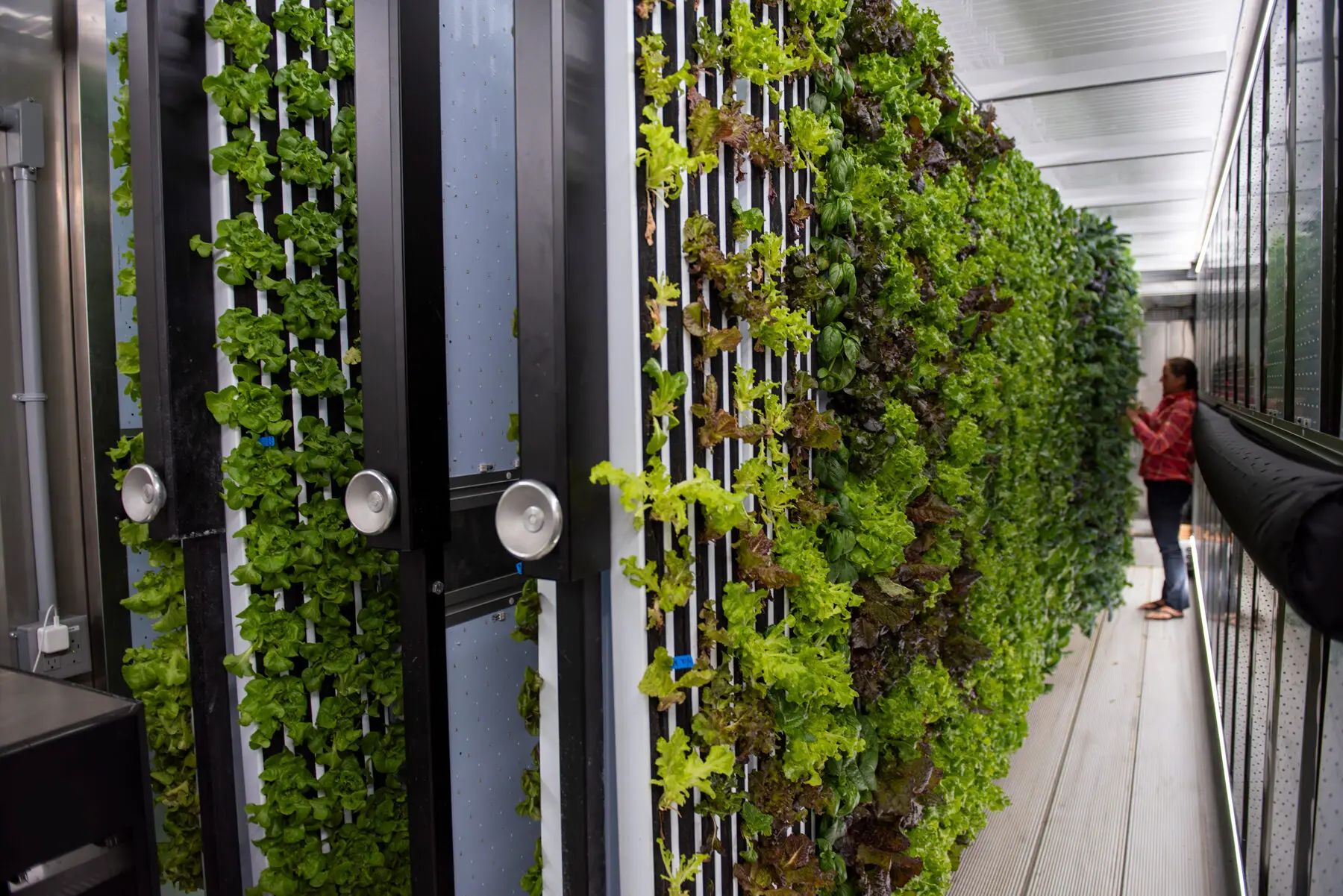
Up valley in Felt, another farm is going high-tech. Sarah and Patrick McDonnell, of Morning Dew Mushrooms, have created an indoor farm that produces gourmet mushrooms and microgreens for restaurants in Teton Valley and Jackson. Like Salsbury’s container farm, Morning Dew’s operation is highly engineered.
“Sarah and I were both into farming, but we have such a short growing season here, conventional farming is hard,” Patrick says. “So, we started to search online to see what we could grow indoors. We came up with mushrooms. It really started as a hobby in a 10-by-10-foot grow tent. It took four years to build it out into what we have today.”
Like Salsbury, the McDonnells have become scientists. Their process involves rehydrating and sterilizing a mix of oak and organic soybean hulls to serve as the growing substrate for the mushrooms. That sterilization requires them to fill a shipping container with 212-degree steam for 12 hours. The substrate is then cooled, bagged, and inoculated with mushroom spawn. The bags need to be shaken — a process that used to be done by hand, but for which they now have a bag tumbler — to ensure the spawn is evenly distributed. Then, the bag is sealed and moved into a dark room where it sits until it’s ready to fruit. Fruiting takes place in another climate-controlled room.
“For fruiting, we create an atmosphere like a rainy day,” Patrick says. “It’s like when mushrooms pop out in the forest. The fruiting room is at roughly 80 percent humidity.
“Unlike plants, mushrooms take in oxygen and expel carbon dioxide. They need fresh air from the outside. Our biggest challenge growing mushrooms here is conditioning the air, bringing it up to warm temperatures,” he explains. “Not many, if any, mushroom growers work in such cold areas. We had to work with Steve Roth to engineer our system.”
Roth owns a refrigeration company in Tetonia, but he’d never created a system like the one Morning Dew Mushrooms required. It was a time-consuming process, and it is the primary reason it took the McDonnells four years to move into their current location.
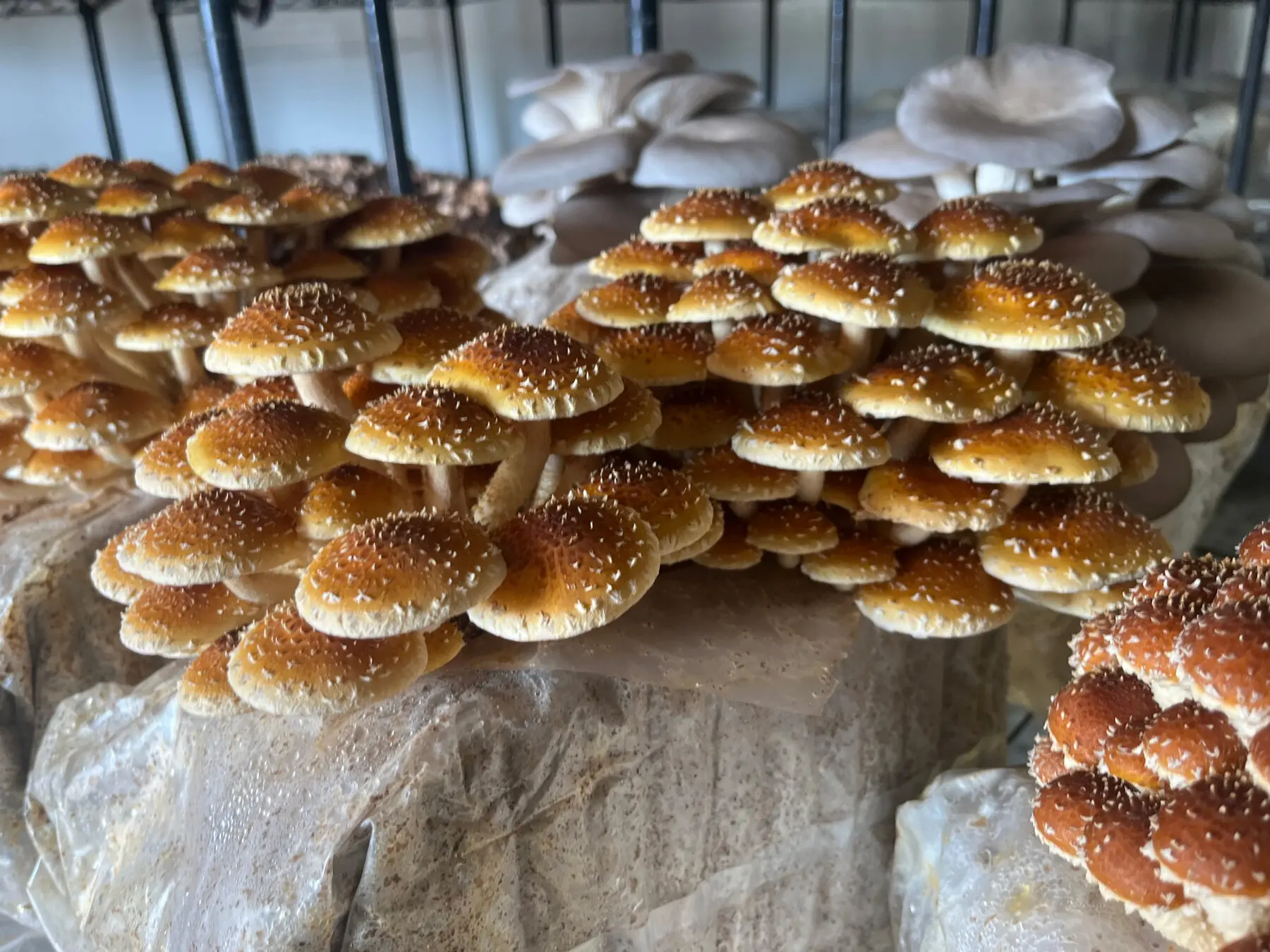
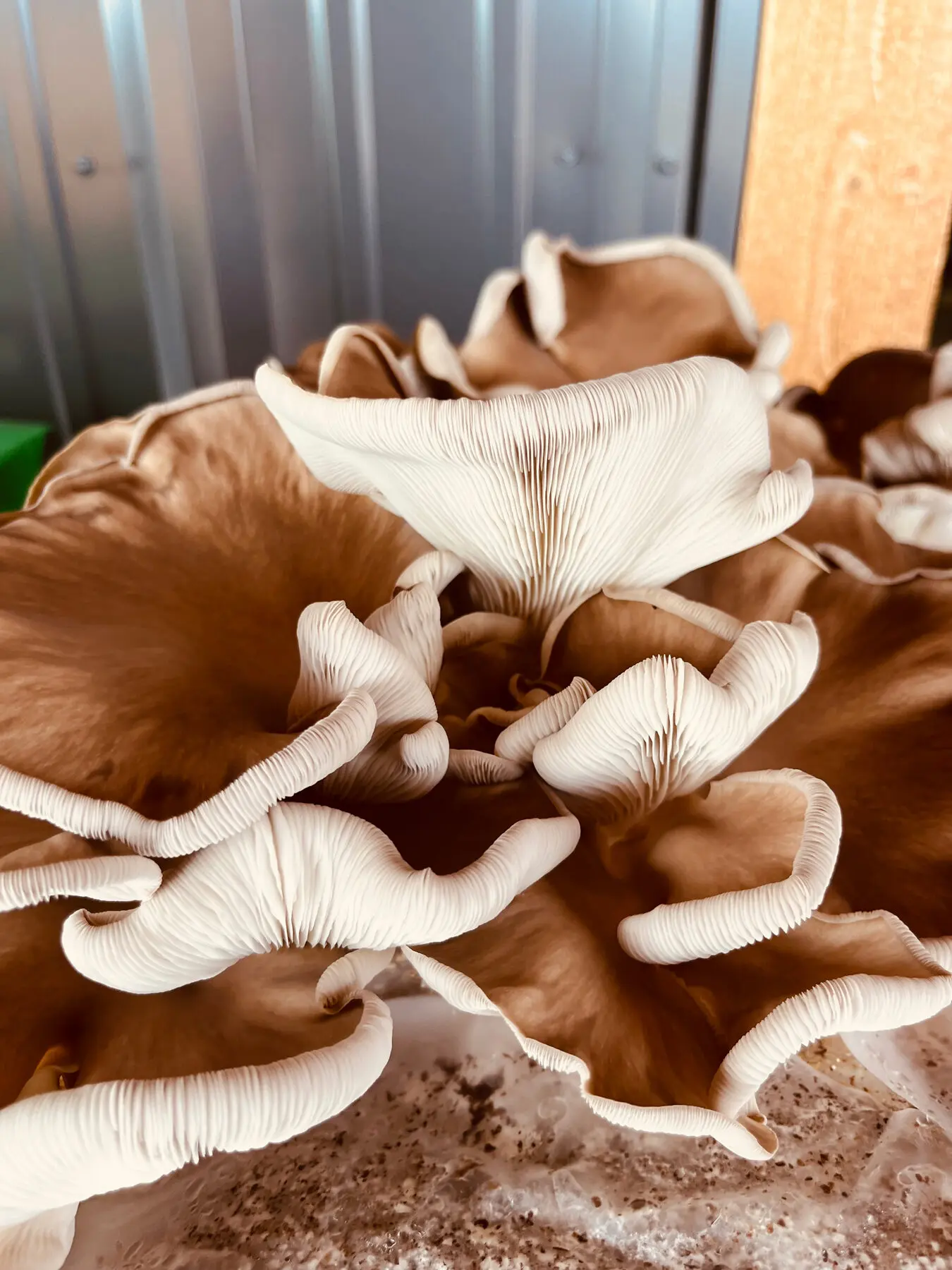
The McDonnells, like Salsbury, love the fact that they can grow food year-round in a harsh environment and make a living. They follow in the footsteps of the region’s original indoor hydroponic farm, Jackson’s Vertical Harvest (currently paused in operations to make vital facility upgrades). Vertical Harvest produces the equivalent of 40 acres worth of produce at its quarter-acre hydroponic farm in Jackson.
Most U.S. cities grow less than 2 percent of the food their populations consume, according to Vertical Harvest’s website. Vertical Harvest’s mission is to help shift that balance by creating urban farms that produce fresh local food 365 days a year. Currently, there are two Vertical Harvest farms in operation — one in Jackson and one in Maine — but the goal is to export the idea to other urban areas around the country.
Hydroponic farms are not without controversy, especially when it comes to determining if a product is organic. Many farmers believe that the soil is an essential component of an organic plant, and that the heart and soul of organic agriculture is being part of the ecosystem. Furthermore, organic farming supports healthy soils, bacteria, and invertebrates, as well as an array of pollinators. But Salsbury says she doesn’t claim to be organic.
“Hydroponic farming is pesticide- and herbicide-free, but it’s not organic because the nutrients are synthesized,” she says. “But in terms of nutrients in the plants, our greens are super nutritious and tasty. Conventional farms produce one or two crops per season; we get a crop every seven weeks, all year round. We’ll always need dirt farms, but hydroponic farms add a critical source of healthy, locally grown produce to the food system.”
